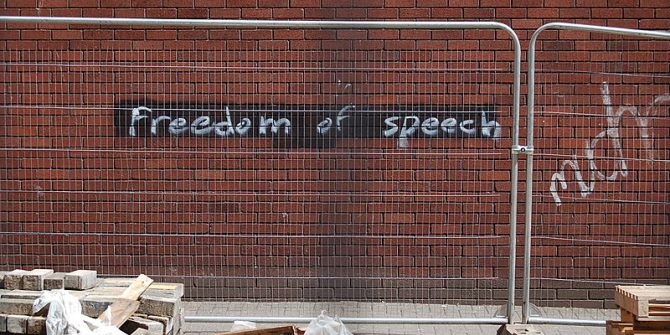Working with activists, academics, NGOs and other child-rights experts in India, Kenya and Brazil, Internews Europe conducted in-depth research to assess the media’s role in protecting and promoting child rights. Some insights from the India research are presented in this blog. LSE alumna and India researcher Neeti Daftari and Shakuntala Banaji, Programme Director for the Master’s in Media, Communication and Development at LSE, summarise some of the findings of the reports produced and suggest that with training, targeted resources and ethical sensitivity, the media in India could do far more to improve and secure the rights, lives and futures of hundreds of millions of Indian children.
India is home to the world’s largest child population. It also has over three million civil society organisations (CSOs) and one of the largest and most complex media landscapes in the world. A signatory to the Convention of the Rights of the Child, India has introduced several path-breaking programmes and legislations for safeguarding child rights. However, a low budgetary investment toward children has meant severe gaps in execution. Government-run programmes for children inevitably suffer from inadequate human and material resources, in some cases leading to terrible tragedies. Of the 430 million children in India, an estimated 236.5 million experience rights violations.* Policy implementation aside, the sheer diversity and scale of violations demands that the role of the Indian media must come under greater scrutiny.
While the Indian news media is entertaining and ubiquitous in many places, child rights experts express concern on the nature of coverage of children, childhood and children’s issues. The coverage is notably skewed toward topics that sensationalise news such as sexual exploitation and abuse (39 per cent of all child-focussed stories**). Future-oriented, discursive or solution-focussed reporting is extremely rare. With a significant number of news items representing children as helpless victims, it’s no surprise that stories on children’s issues feature no actual child voice, with just 8 per cent of such stories quoting children. Moreover, the absence of bodies or a single body that can effectively monitor child rights has meant that violations of national guidelines on child reportage often go unchecked. There have also been many incidents where the media has blatantly flouted guidelines and engaged in unethical practices, including demands from journalists that child rights CSOs pay a certain sum for favourable reporting.
Our research suggests a few key reasons for the low quantity and quality of child rights coverage. Firstly, there is no explicit demand from Indian or international readers and viewers; apparently as a direct result, there is no separate ‘child beat’ in Indian media. This in turn leads to fewer stories and editors often assigning only junior reporters to cover child-related stories. Secondly, the media’s understanding of children’s issues is far from adequate. Many reporters do not have the background knowledge or capacity to appropriately and comprehensively report on child rights issues or violations, leading to dangerous and superficial reportage.
A deeper look at the news media also reveals a deeply problematic picture for the industry itself—a bottom-line compulsion that necessarily requires generating more views, clicks or readership numbers to generate all-important advertising revenues. This has given rise to a ‘Breaking News’ culture at the cost of more thorough, investigative journalism. Focusing on advertiser demands also means neglecting children as a ‘target audience’.
Finally, there’s an age-old conflict to contend against: in many cases NGOs or CSOs and the mainstream media just do not seem to trust one another. Journalists see CSOs as overly self-indulgent and out to maximise a branded public relations agenda, while CSOs see the media as mercenary, irresponsible and politically driven, looking for quick, incident-based sensationalised stories. While there are sensible voices on both sides, and attempts by some organisations and journalists to build mutual trust, currently there is little headway being made towards a common networking solution, so this conflict won’t have easy fixes.
However, the picture is not all doom and gloom. The fast-paced growth and popularity of social and mobile media in India means that capacity building for CSOs and media houses on the use of digital and other new media platforms for communicating child rights issues could go some way in promoting constructive public debate amongst those who have access. Although massive and persistent barriers still remain for children wishing to gain access in rural areas, India has over 900 million mobile subscribers, and over 78 million social network users. An example of innovation within this space is ‘Mobile Vaani’, a mobile radio social network and a Facebook of sorts for mobile users in rural India.
Nevertheless, the current business model of news suggests that children’s rights and issues will play second fiddle to entertainment or outright sensationalism. But sensitivity and depth of reportage on children’s issues could be developed through regular media sensitisation workshops, provision of issue-based information kits to journalists, arranging field visits, organising media-children interfaces, online courses run by children and knowledgeable child rights workers, and partnering with journalism schools to develop curricula on child rights coverage. Incentives for journalists are needed and could be in the form of awards for quality child reportage and fellowships to study child issues. Further, child-produced media content could be encouraged through the setting up of youth media bureaus and a children’s newswire.
Finally, networking between the CSOs and the media could begin with a simple joint platform to establish a monitoring body ensuring ethical guidelines are met and violations flagged. This is the common ground that CSOs and journalists can then build upon to ensure more meaningful engagement and discourse on child rights in India and worldwide.
Listen to the debate about child rights in the news in India, Brazil and Kenya from the launch of the two reports here.
The authors would like to thank Thomas Baerthlein, Programme Manager Africa/Asia at Internews.







